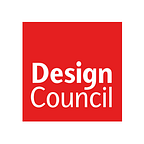Using artificial intelligence as a design tool for the climate crisis
Cat Drew, Chief Design Officer, Design Council
AI is the technology on everyone’s lips at the moment, including the design world. Over the last few months, and at this year’s Design for Planet Festival, we’ve been exploring how designers can use AI to have a positive impact on the planet. It is far more powerful and autonomous than designers’ traditional tools of pencils, wood-planes or printing presses.
But far from being replaced by it, designers must see it as a collaborator that can help speed up and improve climate innovation. And if anything, rather than ceding creative agency and accountability, design’s role becomes even more important to help ethically create the technology that will shape our world.
Data as material
AI and machine learning are nothing new. Alongside the potential to make sense of huge datasets, predict events and automate decisions, there are much discussed challenges over where the use of biased data exacerbates systemic inequalities. The recent excitement around generative AI (using data to create visual images) has been met with concern from the design profession, because it is less clear where data is drawn from, and therefore increases risks for copying and IP.
So data, much like any materials has to be treated with care in terms of its quality and transparency over where it comes from. And when it comes to climate, the emissions that are used to process and store it. But there are huge benefits for climate design and innovation, particularly if the AI is well designed in the first place.
Predicting and problem-solving
Machine learning can analyse enormous datasets millions of times faster than a human, this could be used to predict urban mobility flows or rewilding opportunities.
At the festival, Rob Maslin from the Satellite Applications Catapult shared how ForestMind provides insights about where deforestation is happening in South America, so European food retailers can avoid buying food products from those farming areas. It uses powerful AI and satellite data to create these predictions, using land cover imagery. But in order to make this ethical, rather than the insights automatically leading to an outright ban, human oversight is key. Predicted instances of deforestation were verified or ‘ground truthed’ by people in the country, and where it was the case, farmers were given support to find alternative ways of making their farming economically productive.
Creative computing
Generative AI (e.g. DALL-E and Midjourney) is now able to scan thousands of visual creations and generate new propositions based on those. As we’ve said there is debate over how much risk this poses to designers, and how much it will be seen as a useful tool (like Adobe GenFill) or creative prompt (like Comuzi’s GenAI creative workshops or the Board of Innovation AI-generated product design tools). Neil Maiden shared a circular design version of DesignSparks.io that he had created especially for the festival. He showcased a series of circular design suggestions or sparks based on written problem statements or scenarios you feed it.
Feeding the AI with the right data is important here. Lex Fefegha from Comuzi shared how he used GenAI to create images of a flooded London in 2040, but how an over-representation of hipster photos of Peckham gave a more one-dimensional view of what that area might look like in the future, under water or not.
Training AI inclusively
AI can help automate, make more precise and speed up processes, such as identifying re-useable materials in waste streams, developing sustainable materials or efficient pattern cutting — but, it must be trained on good quality data, otherwise it will only reproduce with greater efficiency what it has learned.
This year’s festival competition aims to do just that. Batchworks x Matta.ai are aiming to create an AI-enabled 3D printing service. This type of manufacture is good for the planet because it is on-demand and locally produced. As part of this, they need to design and make thousands of everyday products to train the AI on how to print them. The festival brief — in partnership with Seymour Powell — deliberately focuses on inclusive products that help communities live more sustainably, so that the resulting AI will work for the widest range of people.
As it is already shaping our lives, we can use it to make better and faster decisions, allowing designers to manifest their ideas faster with GenAI and be more responsive to a problem. In relation to planet there is potential for us to work with AI to better understand the natural world and identify the actions where it needs regenerating, even extending into generated biomimicry models.
Lex Fefehga said, ‘AI is my co-pilot’. We need to see it as a collaborator not a replacement. It is we humans who still create, and control, the AI; setting the parameters towards which it works. These need to be designed ethically with people and planet. There are a whole host of organisations such as Projects by IF, Superflux and the Indigenous AI network that are considering how we design ethical technology and engage people (and nature) in a conversation about how it used.
